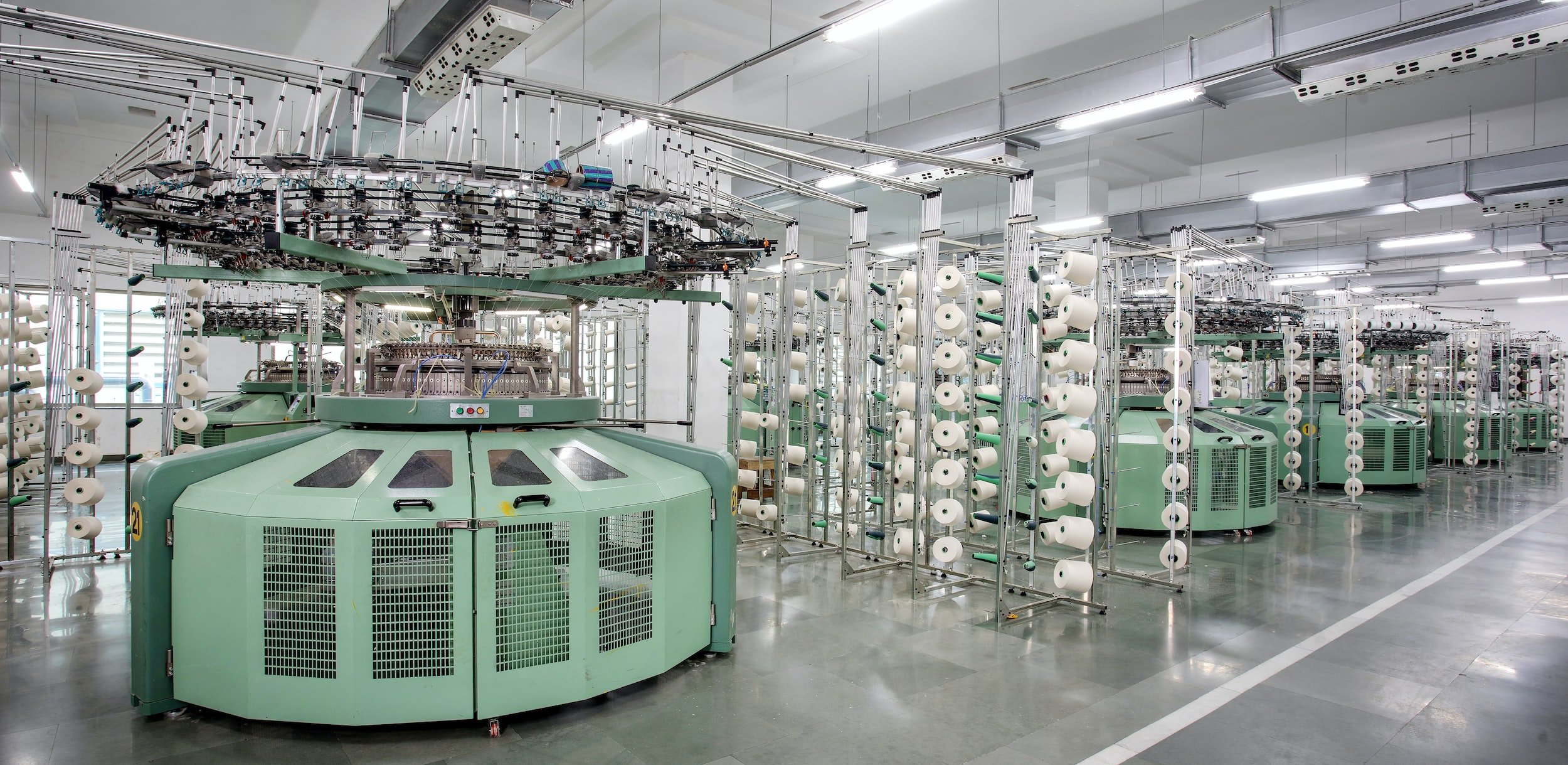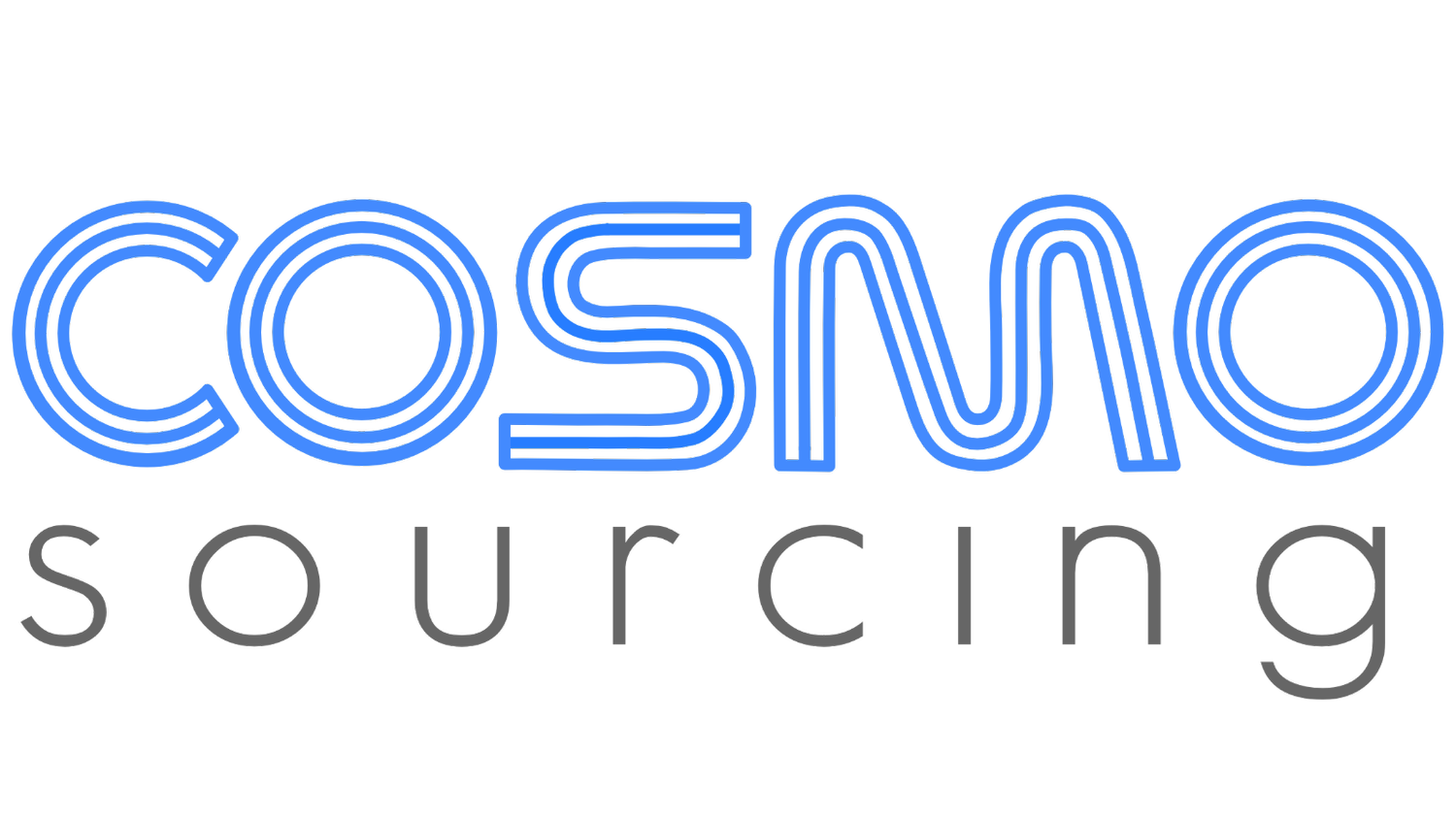
COSMO SOURCING BLOG
Are Tariffs Good or Bad? A Guide
Tariffs are one of the most controversial tools in international trade policy. Governments impose tariffs on imported goods to protect domestic industries, generate revenue, and influence trade dynamics. However, tariffs can also lead to higher prices, economic inefficiencies, and even trade wars.
Throughout history, tariffs have played a major role in shaping economies. From the protectionist policies of the early 20th century to modern-day trade disputes between global superpowers, the question remains: Are tariffs ultimately good or bad?
This article will explore tariffs, their potential benefits and drawbacks, real-world examples, and whether they are an effective long-term economic strategy.
Best Fabrics for Underwear // Ultimate Guide to Comfort, Breathability, and Durability
The perfect underwear fabric should be soft, breathable, moisture-wicking, and durable. Whether you prefer natural fibers like cotton and bamboo or high-performance synthetic materials such as polyester and spandex, the choice ultimately depends on your lifestyle, activity level, and personal preferences. Some fabrics provide extra support and structure, while others prioritize breathability and lightweight comfort. Moreover, specialized materials can help regulate temperature, reduce odor, and offer eco-friendly benefits.
This guide explores the various fabric choices available for underwear, their advantages and disadvantages, and how to determine which material is best suited for your needs. Understanding the differences between natural and synthetic fibers allows you to select underwear that aligns with your comfort, performance, and sustainability goals.
How Do Tariffs Work? A Comprehensive Guide
Tariffs play a crucial role in international trade, shaping economies, protecting domestic industries, and influencing global markets. A tariff is a tax on imported or exported goods that governments use to regulate trade, support local businesses, and generate revenue. Historically, tariffs have been leveraged as economic and political tools, from mercantilist policies in the 17th and 18th centuries to boost national wealth to modern trade disputes that shape international commerce.
Today, tariffs serve functions beyond taxation, particularly in safeguarding domestic industries from foreign competition by making imports more expensive. This approach benefits emerging economies that need time to develop local industries but can also raise consumer costs. The ongoing debate over tariffs revolves around whether they effectively stimulate domestic production or inadvertently burden consumers with higher prices.
The Top 12 Countries for Clothing, Garment, and Apparel Manufacturing
If you're looking to manufacture clothing and apparel, choosing the right country for your production is one of the most critical decisions. The global textile and apparel industry is vast, with numerous countries offering unique advantages in terms of cost, quality, expertise, and ethical labor practices. While China remains the largest clothing exporter, several other nations are rising as strong competitors, providing better pricing, labor conditions, and material quality.
Before diving into the top manufacturing countries, it is important to understand the factors that make a country a prime location for apparel production. Key considerations include cost efficiency, labor expertise, infrastructure, raw material availability, and trade agreements. Each element determines a country's ability to provide high-quality and competitively priced garments to global markets.
This guide ranks the top 12 clothing manufacturing countries based on their export value, production capabilities, and industry strengths.
Who Pays for Tariffs on Imported Goods? Everything You Need To Know About Tariffs
Tariffs are taxes on imported goods to protect domestic industries, generate revenue, or resolve trade disputes. While they may seem straightforward at the border, their economic impact extends across the entire supply chain, influencing businesses, policymakers, and consumers in various ways.
Tariffs can alter sourcing strategies, profit margins, and business market competitiveness. Companies relying on imported materials must decide whether to absorb the costs, pass them on to customers, or seek alternative suppliers. Manufacturers may relocate production or negotiate trade agreements to mitigate these expenses, while retailers must balance higher costs with maintaining customer demand.
The Pros and Cons of Higher Tariffs: Are They Good or Bad for the Economy?
Governments have long used tariffs to regulate trade, protect domestic industries, and generate revenue. When implemented strategically, higher tariffs can offer short-term benefits, such as safeguarding local businesses, promoting job creation, and reducing trade deficits. However, they can also introduce economic challenges, including increased consumer prices, disrupted supply chains, and retaliatory actions from trade partners.
The effectiveness of tariffs largely depends on how they are structured and whether they fit into a broader economic strategy. Policymakers must carefully weigh the short-term advantages against the long-term consequences to avoid unintended disruptions in domestic and global markets. Below, we explore higher tariffs' key pros and cons to understand their economic impact better.
Procurement Terms: RFQ, RFP, RFT, and RFI Defined
n procurement, communication between buyers and suppliers is essential for efficient sourcing and contract negotiation. Standardized requests such as RFQ, RFP, RFT, and RFI are commonly used to facilitate this process. These procurement terms serve as structured methods for soliciting information, pricing, and supplier proposals.
Understanding these different types of requests is crucial for businesses engaged in procurement. Whether you are gathering preliminary supplier information, requesting pricing, evaluating proposals, or running a competitive bidding process, choosing the right request type ensures effective supplier engagement and smooth decision-making. This guide breaks down each of these terms, outlining their purpose, use cases, and key differences.
The Top Countries for Global Furniture Manufacturing and Sourcing Ultimate Guide
Furniture manufacturing is a dynamic and ever-evolving industry, with countries worldwide contributing unique strengths and expertise. From luxury designs to cost-effective production, each nation offers specialized capabilities that meet varying market demands. Thus, businesses and consumers must understand the leading furniture manufacturing destinations and how they align with their needs.
Choosing the right country for furniture production can significantly impact quality, cost, and sustainability. While some nations excel at producing high-end, artisanal furniture, others focus on mass production or eco-friendly solutions. The diversity of the global furniture industry ensures there is a perfect fit for every requirement, whether it’s premium craftsmanship or affordable functionality.
Japan Product Sourcing Ultimate Guide // What Products Are Made In Japan
Sourcing products from Japan has become a popular strategy for businesses seeking access to high-quality goods, innovative designs, and reliable production processes. Renowned for its precision, advanced technology, and efficient logistics, Japan offers distinct opportunities for global buyers. With a reputation built on excellence, Japan offers products that are durable and embody innovative craftsmanship and cutting-edge technology, making them highly sought after across various industries.
Whether you are a seasoned Amazon seller, an e-commerce entrepreneur, or a retailer aiming to diversify and upgrade your supply chain, sourcing from Japan provides a competitive edge. The country’s focus on detail-oriented production and its blend of traditional artistry with modern manufacturing techniques ensure that businesses sourcing from Japan can elevate their product offerings and appeal to a discerning customer base.
The Best China Wholesale Websites List // How to Find Suppliers and Buy Wholesale from China
Sourcing products from China has become a cornerstone of many e-commerce businesses. The country offers an unparalleled combination of diverse product offerings, competitive pricing, and advanced manufacturing capabilities, making it a top choice for entrepreneurs and established companies. Whether you’re sourcing electronics, clothing, or industrial goods, China’s wholesale landscape provides unmatched growth opportunities.
However, identifying a reliable wholesale supplier can make or break your venture. The process involves navigating a complex network of platforms, understanding supplier dynamics, and ensuring quality control. This guide delves into the top China wholesale websites and offers practical strategies to help you maximize the value of your sourcing efforts while avoiding common pitfalls.
How to Find Toy Manufacturers // A Global Guide to Sourcing Quality Toys
Toys spark curiosity, cultivate creativity, and bring smiles to children worldwide. From the simplest wooden block to the most sophisticated robotic invention, they reflect a brand’s innovation and a country’s cultural influences. Yet, behind each plaything’s bright colors and clever design lies a network of global supply chains, intricate manufacturing processes, and strategic sourcing decisions. Understanding where these products are made sheds light on their quality and affordability and reveals how geography, tradition, and technology shape the modern toy landscape.
Whether you’re a business owner seeking the best partners to build your toy brand or a curious consumer looking to make more informed purchasing decisions, this global viewpoint matters. Learning about different countries’ production strengths—from China’s wide-ranging capabilities and Vietnam’s eco-friendly focus to Germany’s premium craftsmanship and Japan’s high-tech approaches—can help you align your goals with the right manufacturing hubs. By exploring the dynamics of worldwide toy production, you’ll be better equipped to appreciate each product’s origins, evaluate its value, and ultimately select or produce toys that truly resonate with your priorities.
How to Find Clothing Manufacturers In Mexico // What Clothing Is Made In Mexico?
companies are now turning their attention to Mexico as a viable and strategic alternative.
Mexico offers a unique combination of benefits that make it an attractive destination for clothing manufacturing. Its proximity to the United States and Canada reduces shipping times and costs and facilitates easier communication and collaboration. Moreover, Mexico boasts a skilled workforce with a deep understanding of textile and garment production, backed by a strong cultural heritage in craftsmanship and design.
This guide aims to provide a comprehensive overview of Mexico's opportunities for clothing manufacturing. We will explore the types of apparel commonly produced in the country, delve into the advantages of partnering with Mexican manufacturers, highlight key production hubs, and offer practical advice on finding and evaluating potential manufacturing partners. Whether you're a startup launching your first clothing line or an established brand seeking to diversify your supply chain, understanding the landscape of Mexican apparel manufacturing could be a game-changer for your business.
What Products Are Made In The USA // American Product Sourcing And Manufacturing Ultimate Guide
Sourcing products domestically has become a strategic choice for businesses looking to capitalize on the benefits of high-quality manufacturing, faster delivery times, and the powerful "Made in USA" branding. In an increasingly competitive market, these advantages can set a business apart by ensuring faster product launches, superior craftsmanship, and a reputation for ethical production. For many companies, sourcing from the United States isn’t just about meeting production needs—it’s about building customer trust and aligning with sustainability and ethical practices.
The United States boasts a diverse and dynamic manufacturing sector that caters to a wide range of industries. From high-tech electronics and medical devices to eco-friendly packaging and luxury apparel, American manufacturers excel in producing products that demand precision, innovation, and quality. However, while domestic sourcing offers compelling benefits, navigating the U.S. manufacturing landscape can be challenging, particularly for businesses unfamiliar with the local market or industry-specific regulations.
What is Strategic Sourcing? Top 12 Examples of Strategic Sourcing
Strategic sourcing is a proactive approach to procurement that involves analyzing and optimizing the sourcing process to meet an organization’s long-term goals. Unlike traditional sourcing, which focuses primarily on cost, strategic sourcing takes a broader view, considering factors like quality, supplier relationships, risk management, sustainability, and innovation. By aligning sourcing practices with business objectives, companies can enhance their competitive advantage, build resilient supply chains, and support broader social and environmental initiatives.
How To Prepare For Tet 2025 When Manufacturing In Vietnam
Tet is not just a day-long celebration; it involves extended festivities and travel for families. The official holiday for 2025 runs from January 27th to February 2nd, though some businesses may close earlier and reopen later. Leading up to Tet, many suppliers and factories experience a surge in demand as companies rush to complete orders before the break. After the holiday, production may resume gradually, and some employees may not return to work immediately.
The disruptions from Tet affect several areas, including production timelines, shipping schedules, and communication with suppliers. Ports often experience congestion as companies try to export goods before the holiday. For businesses relying on Vietnamese manufacturing, proactive planning is necessary to avoid delays and supply chain disruptions.
Top 10 Thailand Alibaba Alternatives and Product Sourcing Websites for 2025
Sourcing products internationally has become a cornerstone strategy for businesses looking to expand their product lines and reduce manufacturing costs. With its booming manufacturing sector and diverse range of high-quality products, Thailand has emerged as a prime destination for global sourcing. From textiles and electronics to artisanal goods, the country's robust supply chain offers opportunities that rival those found elsewhere.
While Alibaba has long been the go-to platform for international trade, its focus is predominantly on Chinese suppliers, which can limit access to the unique offerings available in Thailand. This gap has led businesses to seek alternative platforms and services catering to the Thai market. These alternatives provide a more targeted approach and offer insights into local business practices, regulations, and cultural nuances crucial for successful partnerships.
How To Prepare For Chinese New Year 2025 When Manufacturing In China
The Chinese New Year (CNY), also known as the Spring Festival, is one of the most significant holidays in China. In 2025, it will begin on January 29th, ushering in the Year of the Snake. This holiday is a joyful time for families, but it presents significant challenges for businesses that rely on Chinese suppliers.
Factories across China shut down for extended periods, communication slows to a halt, and post-holiday recovery can take several weeks. Careful preparation is crucial to ensure smooth operations and avoid supply chain disruptions. This article provides practical strategies for businesses to navigate the challenges posed by CNY 2025.
What are Tariffs? How Do Tariffs Work? How Will the New Trump Tariffs Affect Businesses In The US?
Tariffs have re-emerged as a focal point in global economic discussions, influencing everything from international trade relations to the prices consumers pay at the store. As nations grapple with protecting domestic industries while engaging in the global marketplace, understanding the mechanics of tariffs becomes increasingly important. These taxes on imported goods are more than just economic tools; they are instruments that can reshape industries, impact consumer choices, and alter diplomatic relationships.
How To Find Manufacturers For Your Products // Step By Step Guide
Bringing a product to market involves more than creativity—it involves finding the right manufacturing partner to turn your idea into a reality. Whether you're producing consumer electronics, apparel, or beauty products, the quality of your manufacturer is crucial to your product’s success. With numerous manufacturers available globally, it can be challenging to identify the best match for your needs. This guide provides clear steps to help you find and evaluate potential partners.
Understanding the difference between manufacturers and suppliers is a key first step. Manufacturers are responsible for producing goods from raw materials, while suppliers often act as distributors. Knowing when to work directly with a manufacturer versus sourcing through a supplier can give you more control over your product, reduce costs, and streamline your production process.
The Best 25 Private Label Products to Source in 2025
In the competitive world of e-commerce, building your brand through private-label products offers unparalleled growth opportunities. By selling private label products, you can enjoy better control over quality, enhance your profit margins, and differentiate yourself in crowded marketplaces. Whether you are a budding entrepreneur or an established business looking to diversify, private labeling provides a flexible and profitable path to brand-building success.
This comprehensive guide will cover the top 25 private label products to sell, explain how to create your private label product, and explore the many benefits of private labeling. We’ll also examine the difference between private-label and white-label products and offer insights into the costs of private-label production.




















